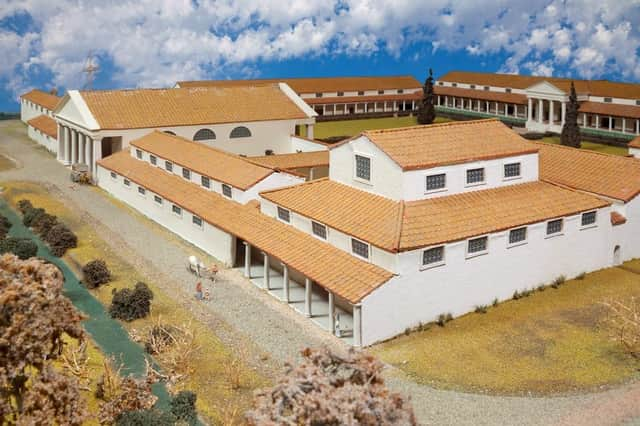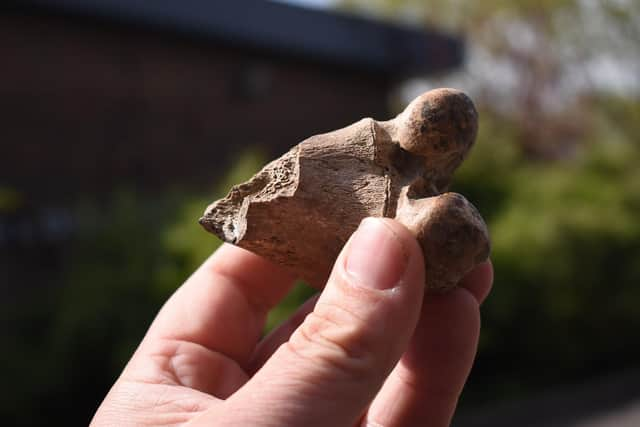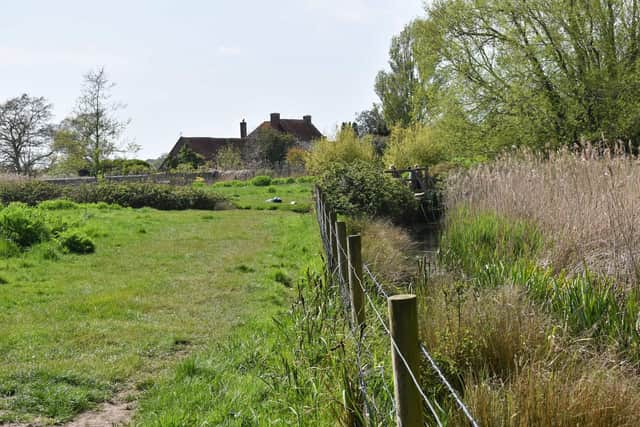Delve into the history of the southern gardens of Fishbourne Roman Palace – possibly the first Roman deer park


The magnificent city walls, the amphitheatre next to Cattle Market car park, and even a mosaic beneath the cathedral floor and bathhouse within The Novium Museum are everyday physical reminders of the heritage of the city.
But the history runs deeper than that, to those willing to look a little harder.
Advertisement
Hide AdAdvertisement
Hide AdFishbourne Roman Palace can hardly be said to be a ‘hidden’ part of the area’s history. The site was originally larger than today’s Buckingham Palace and was once (and still is) home to the largest collection of Roman mosaic floors in Britain.


However, even the villagers of Fishbourne would be forgiven for not knowing that some of them are living on the site of one of the most intriguing pieces of Roman archaeology in the country.
It is fairly well known that much of the modern village lies on top of the southern half of the palace. Anyone travelling through Fishbourne, past The Woolpack Inn, is literally passing across the top of the residential wing of the palace. But, further south, towards the harbour are the remains of its ‘southern garden’.
Little is known about the southern garden – it was identified in 1969 through the excavation of only a very few widely-spaced trenches between the village and Fishbourne Creek.
Advertisement
Hide AdAdvertisement
Hide AdUnlike the extensive excavation of the main palace complex, these few trenches provided only a glimpse into this part of the site, making it all the more compelling.


What is certain is that this area represented a large terrace, stretching 100m down from the palace’s residential south wing to the tidal creek. This terrace was dotted with what appears to have been paths and a pond – elements of what seems to have been a semi-natural garden.
It’s possible to imagine the owner of the Palace, sitting outside his private residence, sheltered from the elements by a secluded colonnaded walkway, and enjoying a few precious moments of peace away from the hurly-burly of palace life.
His view would have been of a landscaped garden stretching down to the harbour, with Dell Quay in the distance. A Roman canal has been identified, that separated the terraced garden from the tidal harbour, so the scene may have included a small private watercraft that could navigate this canal to the edge of the terrace.
Advertisement
Hide AdAdvertisement
Hide AdRecent research has added a little more detail to this idyllic scene. The discovery around 20 years ago that the first fallow deer in Britain had been introduced by the Romans to Fishbourne provided a new dimension to the story of the Palace, adding animals to the list of exotic imports that the owner would have enjoyed.
More recently, chemical analysis of the site’s fallow deer bones has suggested that these creatures were grazing in a salt marsh habitat. This supports the idea that Fishbourne’s southern garden was populated by fallow deer, who would have afforded visual interest as they grazed the salt-rich grasses around Chichester harbour.
In the first century, the Roman author Columella wrote: “Fallow deer serve to enhance the splendour and pleasure of their owners. Those who keep game shut up for their own pleasure are content to construct a park, on any suitable site in the neighbourhood.”
Could Fishbourne be home to the country’s first (and, so far, only) Roman deer park? Further research may just provide the answer.
Advertisement
Hide AdAdvertisement
Hide AdSo, what can be seen today of this deer park? Two millennia of silting, building and landscaping has all but obliterated any trace.
A slight depression along the line of a footpath may be all that remains of the canal but villagers and dog-walkers would likely be oblivious that part of their daily routine takes them across an ancient site of national importance.
While the only known physical remains of the park are a handful of deer bones, carefully curated in the Palace’s modern artefact stores, this shouldn’t detract from its significance. It’s still an important and valuable part of your heritage that you can enjoy every day.
That’s not the end of the story of this part of Roman Fishbourne. Sediment samples have recently been taken from the harbour by a team from Portsmouth University.
Advertisement
Hide AdAdvertisement
Hide AdThese sediments, some dated to the Roman period, act as a ‘time capsule’ for pollen and other plant remains. It is hoped to build a picture of the ecological impact of the Roman invasion in the area and, who knows, if they were bringing exotic deer with them, did they bring exotic plants and might these samples contain the first clues about this?
Learn more about Chichester’s rich Roman history during The Novium Museum’s Roman Week taking place in May half-term, Tuesday, May 30, to Saturday, June 3.
As always, Roman Week will begin with the Roman Re-enactment on Tuesday, May 30, in Priory Park. The day is full of exciting activities. To view the full schedule of Roman Week, visit The Novium Museum website or pop in for a leaflet.
As you celebrate Chichester’s Roman past this Roman Week, remember that our heritage isn’t just what we can see. Like Fishbourne’s deer park, most is invisible. And some is yet to be discovered.